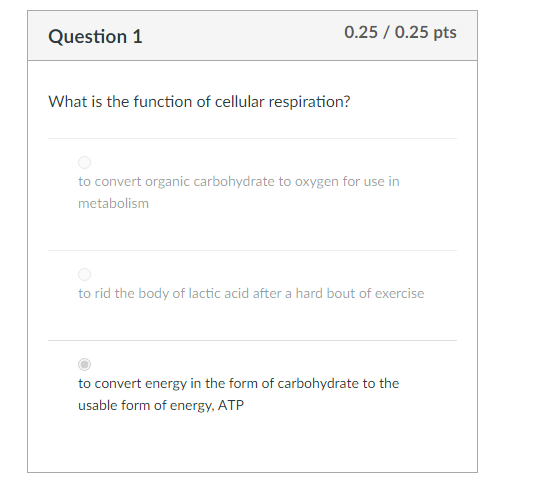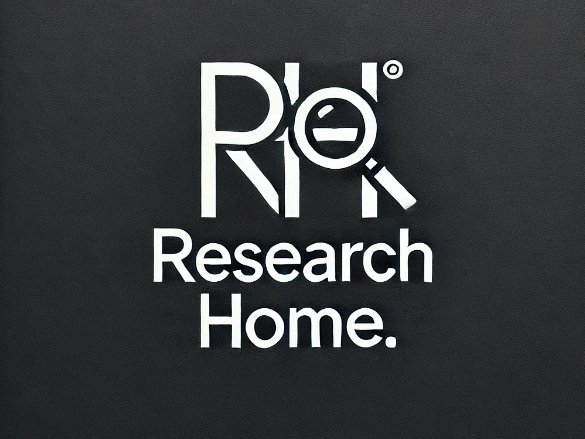Bioenergetics and Cellular Respiration and Fermentation-BIOL-107
Bioenergetics and Cellular Respiration and Fermentation
Question 1
What is the function of cellular respiration?
to convert organic carbohydrate to oxygen for use in metabolism
to rid the body of lactic acid after a hard bout of exercise
to convert energy in the form of carbohydrate to the usable form of energy, ATP
Question 2
Which of the following is the overall reaction for cellular respiration?
oxygen + water → carbohydrate + carbon dioxide +ATP
carbohydrate + water + ATP → carbon dioxide + oxygen
carbon dioxide + water → carbohydrate + oxygen + ATP
carbohydrate + oxygen → carbon dioxide + ATP
Question 3
In glycolysis, glucose is broken down to two molecules of
acetyl CoA
carbon dioxide
glycogen
pyruvate
lactic acid
Question 4
How many ATPs are produced from one molecule of glucose in glycolysis?
28
none
1
34
38
2
Question 5
In glycolysis, as glucose is oxidized, NAD+ is
oxidized
reduced
Question 6
If oxygen is available, what reactions can occur after glycolysis? (select all that apply)
electron transport
Krebs cycle
transition reaction
fermentation
Question 7
The transition reaction involves the mitochondria.
True
False
Question 8
The end products of the transition reaction include:
pyruvate
acetyl-CoA
water
carbon dioxide
oxygen
Question 9
What is the starting material of the Krebs cycle?
carbon dioxide
glucose
acetyl-CoA
pyruvate
Question 10
End products of the Krebs cycle include:
CO2
ATP
oxygen
NADH
water
acetyl-CoA
FADH2
Question 11
When NADH and FADH2 are oxidized at the proteins of the electron transport chain, energy is released. What is this energy used for?
regulate the reactions of the Krebs cycle
remove free oxygen radicals
pump hydrogen ions
power the reaction ATP → ADP + P
Question 12
When one molecule of NADH is oxidized in electron transport, enough energy is released to produce ______ molecules of ATP.
4
3
38
1
none
2
Question 13
When one molecule of FADH2 is oxidized in electron transport, enough energy is released to produce _________ molecules of ATP.
4
34
3
1
2
none
Question 14
If a cell does not have a supply of oxygen, what processes can it carry out?
electron transport
fermentation
glycolysis
transition reaction
Krebs cycle
Question 15
In fermentation, what molecule(s) is (are) produced from pyruvic acid in most animal cells, including human muscle cells?
acetyl-CoA
CO2 and ethanol
water and ATP
lactic acid
Question 16
In fermentation, what molecule(s) is (are) produced from pyruvic acid in yeast and plant cells?
water and ATP
acetyl groups
ethanol and carbon dioxide
lactic acid
Question 17
When fermentation occurs, two ATPs are produced in addition to the two ATPs produced in glycolysis.
False
True
Question 18
Like other respiratory reactions, fermentation occurs in the mitochondria.
True
False
Question 19
The reactions in glycolysis and the Krebs cycle can go in both directions, and therefore, these reactions can be both catabolic and anabolic.
False
True
Answer Preview-Bioenergetics and Cellular Respiration and Fermentation-BIOL-107

$5.00
